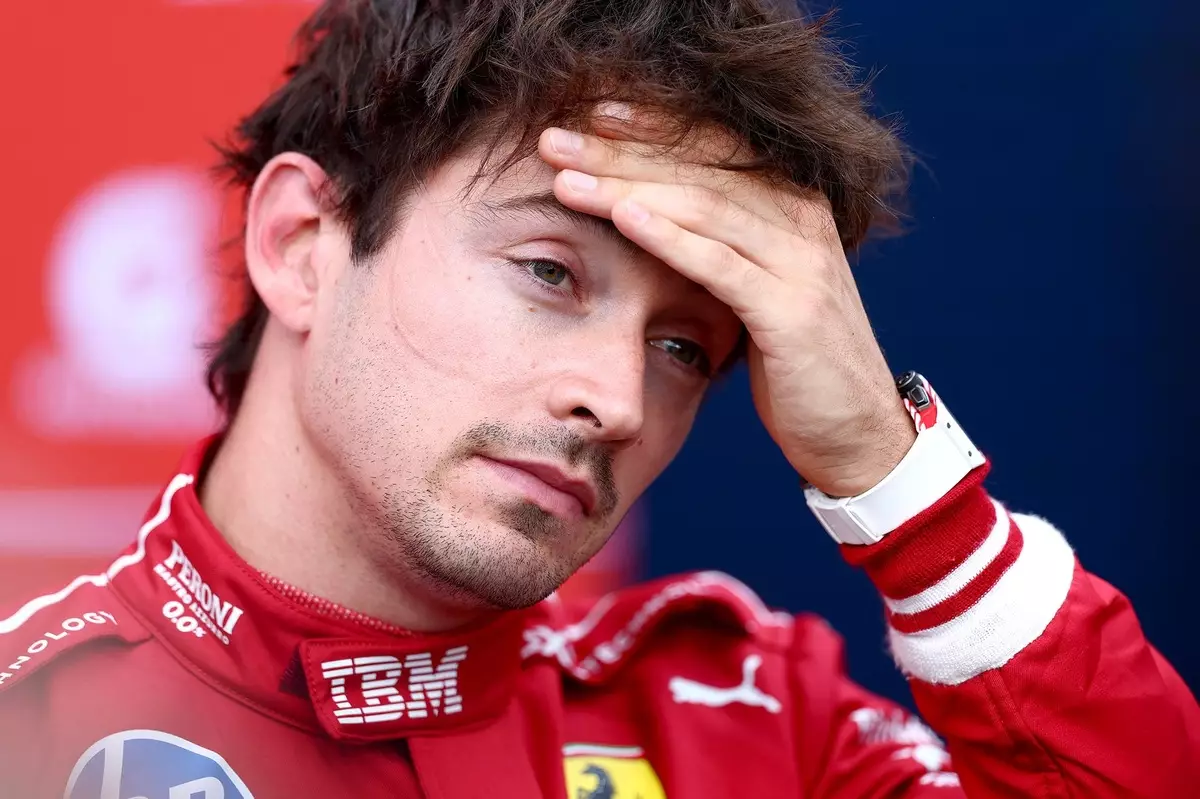Ferrari’s recent performances in Formula 1 continue to underscore a harsh reality: the team remains stuck in a cycle of fleeting optimism followed by disillusionment. During the Belgian Grand Prix sprint race, Charles Leclerc showcased flashes of brilliance—making a clean start, capitalizing on initial overtakes, and demonstrating the raw speed that once promised the team’s potential. However, these moments quickly unraveled, revealing a car that struggles to sustain competitive momentum beyond the first laps. The team’s inability to maintain an edge over rivals like McLaren and Red Bull suggests that Ferrari’s upgrades, while conceptually promising, have yet to translate into meaningful gains on the track.
Leclerc’s early move from fourth to third was the kind of race craft that excites fans but ultimately proved futile. Immediately after, talented but inconsistent overtakes by Norris and Piastri exposed the chasm between Ferrari and the leading teams. Despite initial confidence, Leclerc’s fading pace and the subsequent drop to over 10 seconds behind the race winner highlight the fundamental flaws in Ferrari’s current package. The narrative isn’t merely about speed deficits; it’s about the team’s inability to adapt and extract maximum performance from their machinery when it matters most.
Upgrades: A Hopeful Yet Underwhelming Endeavor
Ferrari embarked on a comprehensive upgrade program to bridge the gap with the front runners. The introduction of a new underfloor, rear suspension geometry, and a specialized low-drag rear wing reflects a detailed effort to improve aerodynamics and downforce management. These modifications are milestones in the team’s pursuit of competitiveness within the complex ruleset that govern F1 design. However, the results have been underwhelming.
Interpreting this, one might argue the upgrades have yet to reach their full potential. The subtle improvements indicate that Ferrari’s engineers have made progress, but the tangible impact on race pace remains elusive. This disconnect raises questions about the efficacy of their development philosophy and the ability to translate theoretical advantages into practical performance. Lewis Hamilton’s reflection on his recent stint at Spa, where he moved from 18th to 15th despite the upgrades, encapsulates this frustration. The race underscored how aerodynamic gains often manifest as marginal improvements in overtaking and sustained speed, not game-changing shifts in the standings.
Ferrari’s response to these challenges seems cautious but optimistic. With team principals and drivers acknowledging that the upgrades were a step in the right direction, the critical factor rests on whether the next steps will manifest in more decisive gains. For now, the team’s progress appears incremental, functioning as a reminder that technological advancements in F1 are often a marathon, not a sprint.
Driver Perspectives and the Road Ahead
Leclerc’s candid assessment of his race and the current state of Ferrari’s competitiveness paints a stark picture. His practical view that the team is “not very far off the maximum potential of the car” reveals an internal acknowledgment of underlying limitations. It is as if Ferrari is a car with the right ingredients but unable to cook a winning formula. The regret perhaps lies in the stagnation—despite upgrades, the front-runners continue to accelerate away.
Meanwhile, Hamilton’s reflections shed additional light on how upgrades are perceived across teams. His comments about not spinning and moving forward despite a difficult race highlight the importance of consistency and traction. Interestingly, Hamilton’s mention of a rear-axle lock-up in Canadian practice, along with speculations about internal upgrades, suggests that the technical department is experimenting, but often these changes yield only subtle improvements or unforeseen issues.
Critically, Ferrari’s struggle exposes a broader flaw—an inability to close the performance gaps that now seem to be widening. The team’s resourcefulness is undeniable, but the disconnect between development efforts and on-track results hints at deeper organizational or conceptual hurdles. With Red Bull and McLaren seemingly pulling ahead with more refined or better-integrated upgrades, Ferrari’s challenge is as much about internal cohesion as it is about technical innovation. The road to reclaiming their once-dominant status demands not just upgrades, but a seismic shift in strategic thinking, engineering precision, and driver confidence—a pursuit that Ferrari must undertake with renewed focus and relentless determination.

